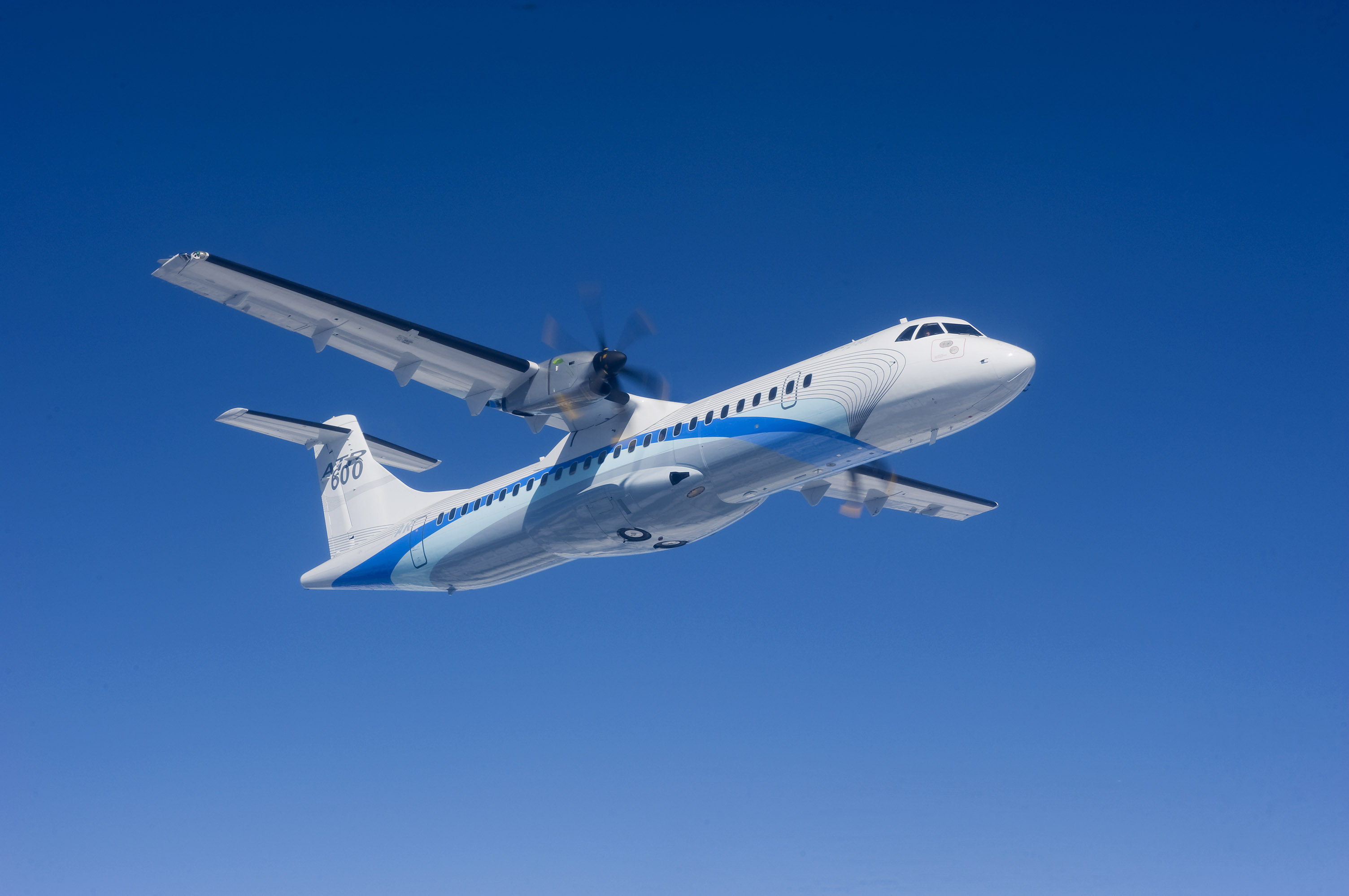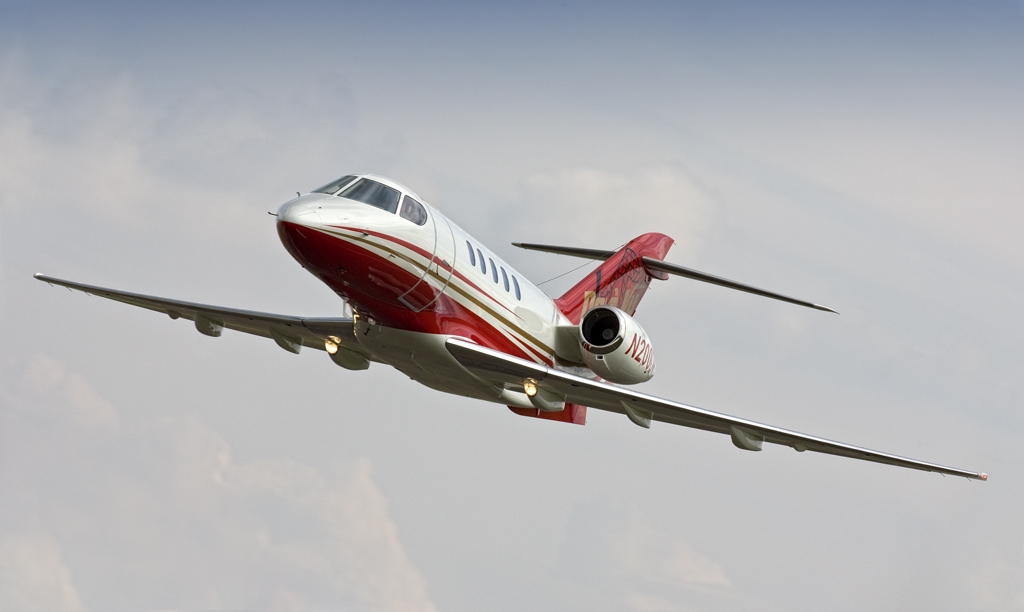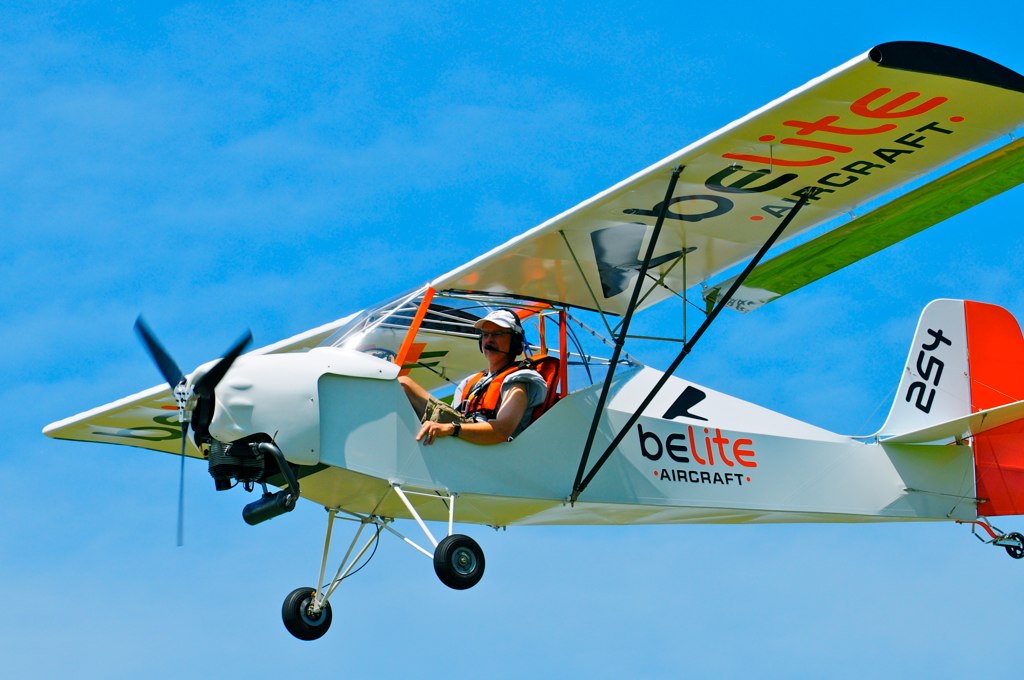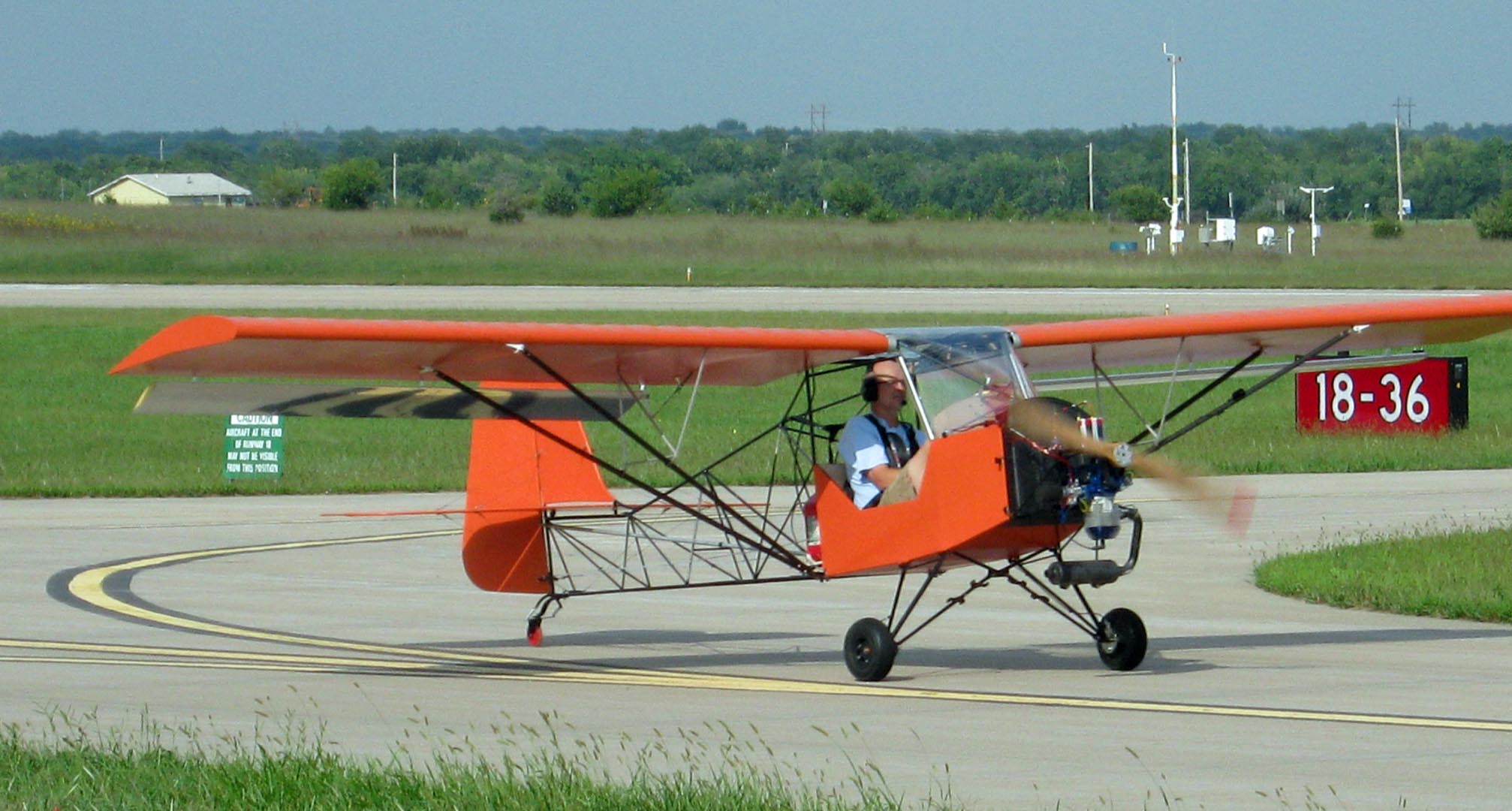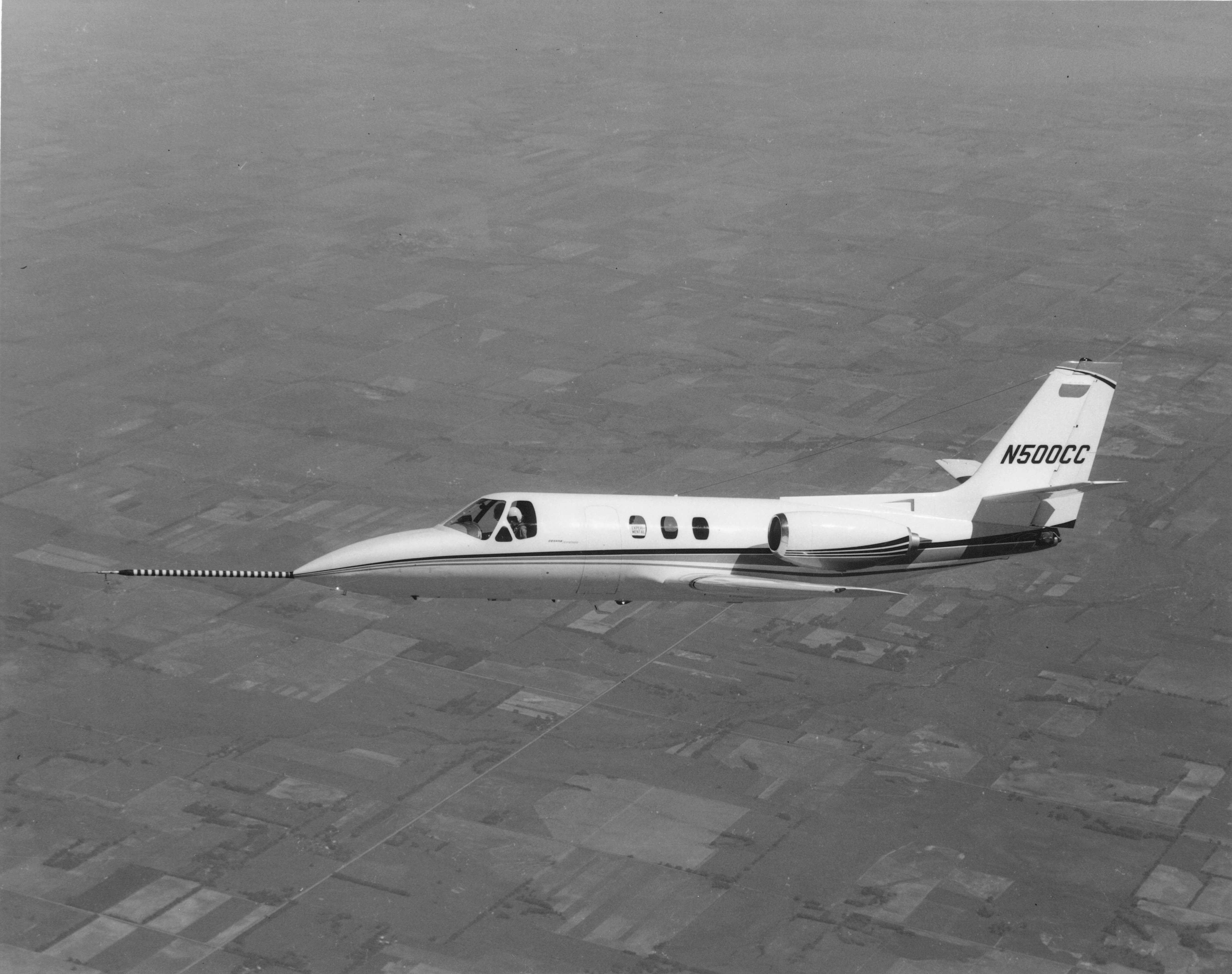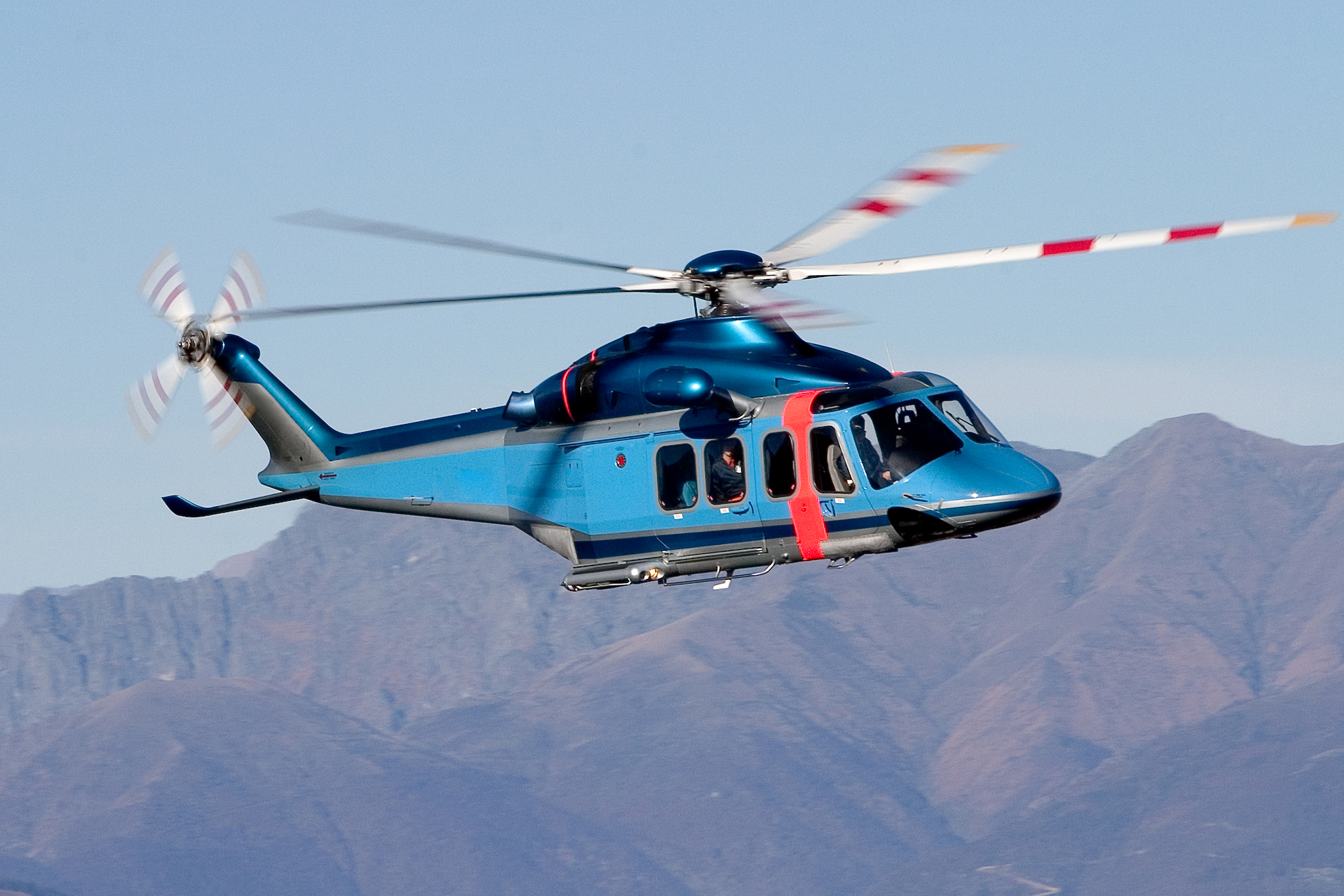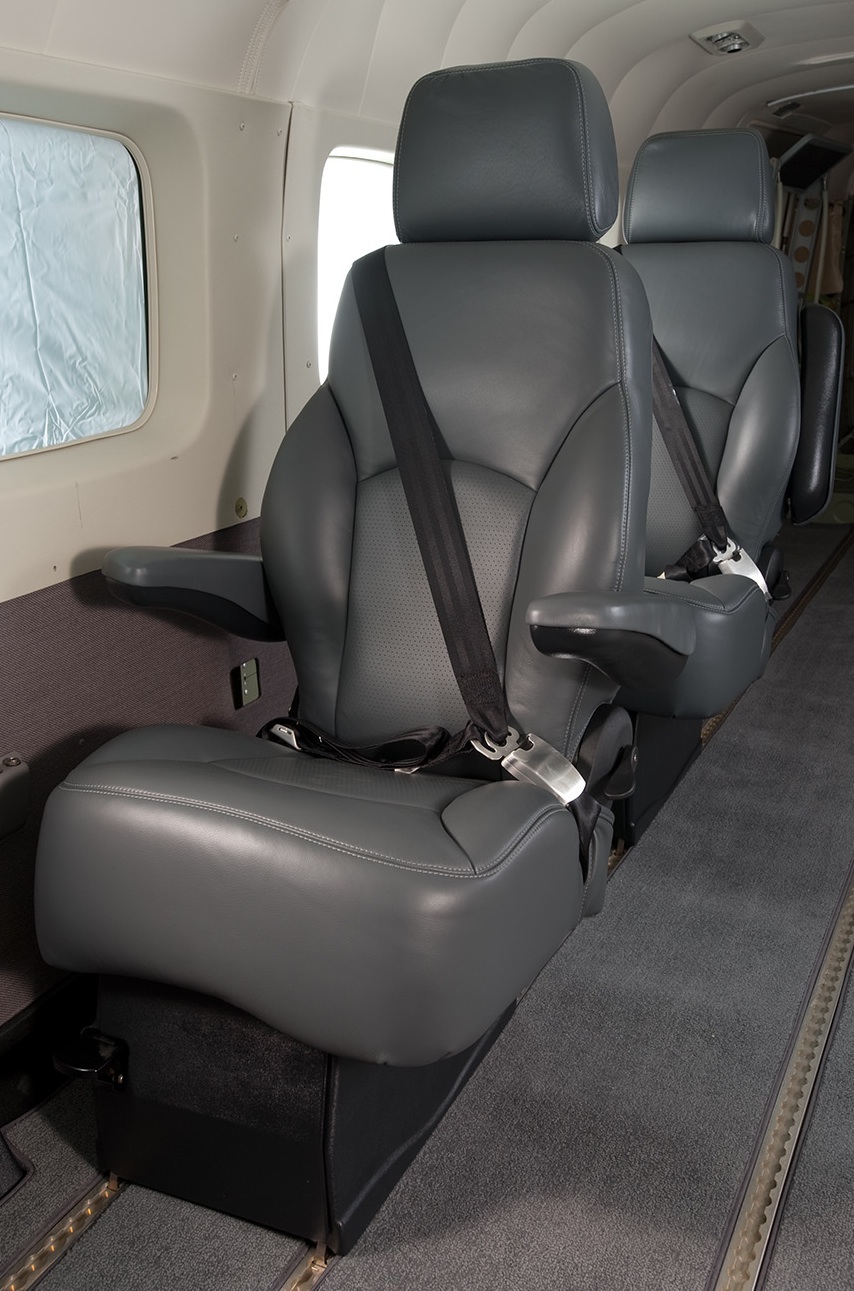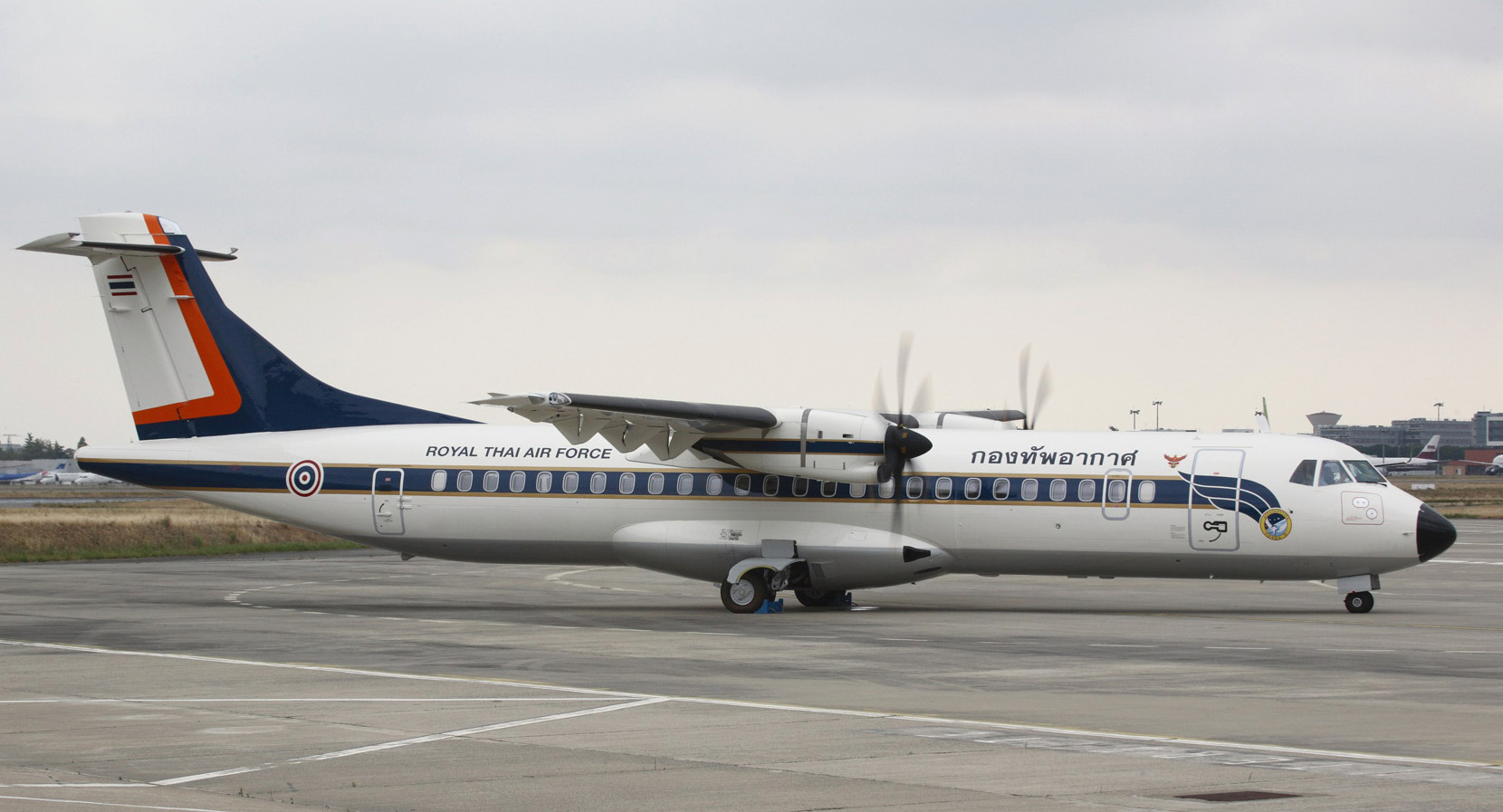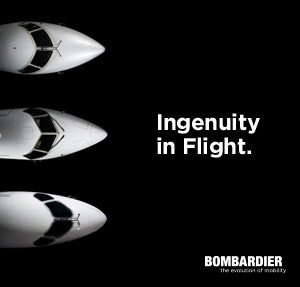ATR presents the first ATR ‘-600’ series aircraft
October 1, 2009
Today, ATR officially presented the first aircraft of its new ‘-600’ series. The aircraft, an ATR 72-600 prototype, was unveiled during a ceremony, which took place in Toulouse, under the patronage of Dominique Bussereau, Secretary of State for Transport, represented by Patrick Gandil, General Director of French Civil Aviation.
Launched in October 2007, the new ‘-600’ series follows its development phase according to the schedule planned for the two models, the ATR 72-600 and the ATR 42-600, of which the first commercial aircraft will enter into service in 2011. To date, ATR has recorded orders for 59 of these aircraft (5 ATR 42-600 and 54 ATR 72-600).
The ATR 72-600 presented today, which started its flight test campaign in July 2009, is fitted with new Pratt & Whitney 127M engines. These new engines provide 5% additional thermodynamic power at takeoff, thus improving performance on short runways, in hot weather and on high altitude. The incorporation of the “boost function” enables use of this additional power as needed, only when called for by the takeoff conditions. Consequently, maintenance costs and fuel consumption are minimized. In addition, these new engines allow the aircraft to increase the single engine altitude by 1000 feet (300 meters).
With an aim to increasing the aircraft payload, the maximum takeoff weight for the ATR 72-600 can now attain 23.000 Kg.
This first ATR 72-600 is also the first to be fitted with the new, latest generation avionics suite, specifically developed for the ‘-600’ series. These new avionics comprise the very latest computer systems for navigational aids, flight data recording, automatic piloting and communications, entailing a better flight interface. The new cockpit, which integrates 5 LCD screens, is also fitted with a new multi-purpose computer (MPC) enabling optimized integration of all systems and better and faster computing capability. This new MPC will also facilitate aircraft maintenance operations. The ATR 72-600 avionics integrate an autopilot which will be CAT IIIA certified. This will allow a minimum decision height for landing of 50 feet (15 meters), thus optimizing aircraft operational capabilities during landing under deteriorated weather conditions. Additionally, the new ATR ‘-600’ avionics improve the required navigation performance (RNP), facilitating more direct approaches to airports, especially to the most congested, offering an even greater reduction in fuel consumption. Finally, it enables simplification and increased reliability of the cockpit systems, significantly reducing their maintenance costs”.
“We are very proud and very happy to present our first ATR 72-600 today. The new ‘-600’ series has been designed to improve the performance of our aircraft in terms of fuel consumption and engine power, maximum takeoff load and reduction of maintenance costs” declared Stéphane Mayer, Chief Executive Officer of ATR, during the presentation of the first ATR 72-600. “The improvements to our new ‘-600’ series are written into our continuous development philosophy in order to optimally respond to the needs of our customers, whether in terms of reliability, control of operation costs as well as passenger service and comfort”.
The ‘-600’ series ATRs will also be fitted with a new cabin incorporating new lighter and more comfortable seats and larger overhead baggage bins. Targeted at providing passengers with optimized comfort the new cabin will also be equipped with LED lighting and in-flight entertainment systems (IFE).
Stéphane Mayer added: “We are actively working on the development of this new cabin which will offer passengers even higher comfort than the one of our current “Elegance Cabin”.
And to conclude: “We are convinced that the ATR ‘-600’ series, which also presents the lowest CO2 emissions per passenger, will become the reference in regional air transport, thus responding to the expectations of airlines in terms of competiveness and respect for the environment”.
The ATR 72-600 and the ATR 42-600 will carry out respectively 150 and 75 flight hours respectively to test their new equipment before their certification. The common trunk between the ATR 72 and the ATR 42 will enable the ATR 42-600, which will commence its flight test campaign next year, to benefit from certain tests completed by the ATR 72-600.
Emivest Aerospace Corporation Delivers First Emivest Branded SJ30 on Sept 23, 2009
September 28, 2009
San Antonio, Texas, USA – Sept 23, 2009 – Emivest Aerospace Corporation (EAC) is pleased to announce that SJ30, serial number 008, was delivered to an enthusiastic new SJ30 owner on September 23, 2009 in ceremonies in San Antonio. Serial number 008 is the first SJ30 to be delivered under the Emivest Aerospace brand and becomes the third SJ30 in the fleet. The aircraft was outfitted at Jet Works Air Center with an HF radio (with SELCAL), dual Mode S (with enhanced surveillance) transponders, cockpit speaker mute, coupled Garmin 500 (with XM weather), veneer cabinets, a Rosen based in flight entertainment package, and Alto speaker system. This SJ30 brings comfort to a new level to match the SJ30’s unrivaled performance.
Harry Mohney, Déjà vu Consulting, Inc runs an entertainment business that spans the United States and beyond to international locations. His SJ30 will be used to manage his business. Mr. Mohney is excited to get his aircraft. “I have waited for over 4 years for my SJ30. We have persevered through it all, but have always known that the SJ30’s performance was going to be worth it. Once my pilot and I went though our training, we truly began to see the culmination of the dream. I am very appreciative of all of the people at Emivest who made this happen and look forward to having some fun in my SJ30.”
Anthony Powers, Emivest CEO was on hand to personally congratulate Mr. Mohney on his new aircraft. “We welcome Mr. Mohney to the SJ30 family. We share, with the entire Team at Emivest Aerospace, the pride and satisfaction of moving the company forward over the last one year and dedicate ourselves to providing ongoing support to Mr. Mohney and our future customers, including Mr. Morgan Freeman who is looking forward to taking delivery of his cherished SJ30 next month”
First Upgraded British Army Lynx Flies With New Engines
September 16, 2009
AgustaWestland, a Finmeccanica company, is pleased to announce the successful first flight of the British Army’s first Lynx AH Mk.9A fitted with more powerful CTS800 engines, just 10 months after contract award. The maiden flight, lasting 60 minutes, took place today at AgustaWestland’s Yeovil facility with the aircraft handling as expected.
Graham Cole, Managing Director, AgustaWestland, said after the flight “I am delighted that the first flight has been achieved in such a short period after contract award. The rapid progress we have been able to make on this programme highlights the benefits of partnering, under the framework of the Strategic Partnering Arrangement, which will see these aircraft being back on the front line supporting our troops in the shortest possible time.”
The first four of the 12 aircraft will be delivered in late 2009 and the remaining eight will be delivered in 2010. The CTS800-4N engines and associated equipment are being pulled forward from the AW159 Lynx Wildcat programme. The new engines produce 37% more power than the current Gem engines that are fitted to the Lynx AH Mk.9 giving the aircraft a significant increase in power which will allow the aircraft to operate in extreme hot and high conditions at high weights.
In December 2008 the UK Ministry of Defence signed a contract with AgustaWestland to pull forward AW159 Lynx Wildcat programme technologies to provide a rapid upgrade for 12 British Army Lynx AH Mk.9 aircraft with CTS800-4N engines to significantly improve the performance of these aircraft in hot and high operating conditions, such as those found in Afghanistan.
Under this Urgent Operational Requirement (UOR) contract AgustaWestland commenced work even before contract award to ensure the programme could be completed as rapidly as possible. A written-off airframe supplied by the Ministry of Defence was used to trial the installation and changes required to the top deck structure of the aircraft, as a risk reduction exercise. Similarly AgustaWestland’s Super Lynx 300 demonstrator aircraft has been used to perform a range of trials in support of the programme to speed up the qualification process prior to entry into service.
The Lynx AH Mk.9A upgrade comprises the installation of CTS800-4N engines which require modifications to be carried out to the main gear box, top deck structure and rear fuselage. Additionally changes are carried out in the cockpit where the new engine controls and digital displays are installed.
AgustaWestland is also providing a comprehensive support for the Lynx AH Mk.9A aircraft including an initial spares package, integrated electronic technical publications and training. The training package includes training for aircraft and avionic technicians as well as aircrew and will be completed by the end of November 2009.
Belite Aircraft Offers Lower Cost Model or Carbon Fiber Version of Belite 254
September 16, 2009
Basic version and Carbon Fiber Model 254 CF provide range of capabilities and pricing
Wichita, KS—Belite Aircraft has developed two variants of its FAR Part 103 compliant, ready-to-fly airplane that provide the fun and exhilaration of flight at two distinct price points and with different optional equipment. To meet the demand for an affordable, straight-forward, and lightweight version, Belite is offering the Model 254 in a Ready To Fly (RTF) configuration for $29,995, FOB Wichita. The “premium” version of the aircraft, which incorporates approximately 50 additional features and makes extensive use of carbon fiber to lower its overall weight, has been christened the Belite 254 CF. It is also available Ready To Fly for $54,995.
The basic Belite 254 incorporates more aluminum and less carbon fiber than its more advanced sibling and eliminates some non-essential options. It retains the carbon fiber firewall, full span flaperons, five gallon detachable fuel tank for easy refueling, 5 inch wheels, brakes, electric start, full lexan windshield and sunroof, fiberglass cowling, flight instrumentation, electric start, electric fuel gauge, and much more. Powered by a 30 horsepower engine, it also offers foldable wings and a flying weight that is well below FAR Part 103 requirements at 242 pounds. Consequently, owners / operators are free to additionally customize the airplane to meet their requirements.
The Belite 254 CF includes highest technology carbon fiber spars and ribs, hydraulic brakes, aluminum wheels, full flight instrumentation, built in transceiver, bigger 45HP engine, enhanced electrical system, and a “Gizmo” dock for incorporation of a portable GPS. It also includes a ballistic, full-aircraft parachute system, a “skinned” aft fuselage and an attractive, Stewart Systems covering system and distinctive paint scheme.
“The introduction of the reduced-price model of the Belite 254 is a response to potential customers who want the innovative engineering, sprightly design, and a measure of taildragger conventionality in an airplane that doesn’t require an FAA registration, a pilot’s license or a current medical at a price that is well below the bottom level of the Light Sport market,” said James Wiebe, Chief Executive Officer of Belite Aircraft. “They indicated that they like our airplane but wanted a basic aircraft that they can modify to their own specifications. For those who want the fly-away convenience and a significant amount of additional capability and flexibility, the Belite 254 CF enhances the basic design with practical and safety-enhancing features like additional avionics, a parachute and the weight savings provided by carbon fiber construction.
Wiebe also indicated that Belite Aircraft will be announcing a low cost Belite 254 kit later this month. Delivery positions for kits or finished, ready-to-fly airplanes may be reserved with a deposit of $2,500.
Cessna Celebrates 40th Anniversary of Citation’s First Flight
September 15, 2009
WICHITA, Kan., Sept. 14, 2009 Cessna Aircraft Company, a Textron Inc. (NYSE: TXT) company, is celebrating the 40th anniversary of the maiden flight of the Citation, the first airplane model in what has become the largest fleet of business jets in the world.
On Sept. 15, 1969, pilot-in-command Milt Sills and co-pilot J.L. LeSueur flew the first prototype of the Cessna Citation from Wichita’s Municipal Airport (now Mid-Continent Airport). The one hour and 45 minute flight was a significant milestone in bringing the company’s first business jet to market. Flight testing continued until certification in September 1971, followed by deliveries in January 1972.
Cessna had unveiled a mockup of the aircraft in October 1968, originally calling it the Fanjet 500. The concept was to offer a growing population of business travelers an aircraft that was an easy transition for twin-engine turboprop pilots and a quieter, simpler, safer and less expensive option than other business jets on the market. At a price of about $695,000, the Citation offered a maximum cruise speed of 349 knots true air speed in a six-passenger, pressurized, turbofan-powered business jet with short takeoff and landing requirements.
Days before the prototype’s first flight, Cessna settled on a more distinctive name for the jet Citation to evoke the extraordinary combination of abilities that propelled the thoroughbred racehorse by the same name to win the elusive Triple Crown in 1948.
Cessna has now delivered more than 6,000 Citation variations worldwide and operates eight domestic and one international Citation Service Centers. There are also six domestic and 29 international authorized service centers. Current production Citation models are: the Mustang, CJ1+, CJ2+, CJ3, XLS+, Sovereign and Citation X. The Citation CJ4 is in flight test and will enter into service in 2010.
Maiden flight of the first Citation over the great plains of Kansas.
Japan National Police Agency Orders One More AW139 Helicopter
September 15, 2009
AgustaWestland, a Finmeccanica company, and Mitsui Bussan Aerospace are pleased to announce that the Japan National Police Agency (JNPA) has ordered another medium lift AW139 helicopter to replace the Chiba prefecture’s AS332L1 helicopter. The selection is endorsement of the popularity of the AW139 and supports the growing views that the multi-role AW139 can perform the mission requirements of older heavier class helicopters. This addition to the JNPA fleet increases the number of AW139 helicopters operating in the law enforcement role in Japan to three, with the first two helicopters being selected by the Tokyo Metropolitan Police Department.
AgustaWestland has achieved strong growth in the Japanese helicopter market in recent years, with the AW139 gaining success in both the commercial and public service markets. The AW139 is well positioned to meet future market demand in Japan for a wide range of missions including fire fighting and disaster relief. The AW139 is currently operating in the Search and Rescue role with the Japan Coast Guard and in the law enforcement role with the Tokyo Metropolitan Police Department. In addition the helicopter has been purchased by All Nippon Helicopter to provide NHK with an enhanced capability to provide Electronic News Gathering Services.
The AW139 has set the new standard in the medium twin class featuring unparalleled performance, state-of-the-art technology and the most spacious and comfortable cabin. Designed with inherent multi-role capability and flexibility of operation, the AW139 is capable of carrying up to 15 passengers or up to four litters and four medical attendants.
State-of-the-art technology, outstanding performance, low operating costs and the only helicopter in its class to meet the latest safety standards, have made the AW139 the helicopter of choice in its class. The AW139 is a new generation medium twin-engine helicopter offering unmatched performance, capacity and safety. It meets the most stringent civil and government certification standards, including the latest FAA and EASA FAR/JAR Part 29 amendments. The AW139 has an optional Maximum Gross Weight (MGW) of 6,800 kg (14,991 Ib), a 400 kg (882 Ib) increase on the standard MGW of 6,400 kg. The increased MGW and resulting payload increase enables the AW139 to meet long range mission requirements giving operators greater levels of capability.
Orders for almost 440 AW139 helicopters have been placed by almost 120 customers from nearly 40 countries to perform many missions including offshore transport, SAR/EMS, VIP/corporate transport, law enforcement and homeland security, utility and various government duties.
Yingling Aviation Offers Versatile Lightweight Seat for Cessna Caravans
September 15, 2009
Wichita, KS—Yingling Aviation, which has installed more than 100 OASIS interiors in the Cessna Model 208 Caravan, has developed a new versatile lightweight seat (VLS) for use in the popular single engine turboprop. Designed to provide Caravan owners with an option that is lighter and with more comfort, the VLS can be incorporated into the OASIS package or ordered as an option on the standard Model 208. At a fully-upholstered weight of 45 pounds, the seat comes with a quick release feature that allows easy removal to permit the airplane to be used for cargo carrying missions.
“The specially-designed VLS is another example of our ongoing efforts to provide Cessna Caravan operators with creative and economical ways to maximize the productivity—and comfort—of their airplane. The Caravan is known for its versatility so we’ve designed a seat that adds even more flexibility to it,” said Lynn Nichols, president of Yingling Aviation.
The VLS design offers passengers enhanced visibility, is fully-reclinable and equipped with both inboard and outboard stowable armrests. The headrest is also adjustable for added comfort. The seats have passed the Federal Aviation Administration’s (FAA’s) 21G dynamic test requirement for forward-facing seats and are equipped with full forward breakover seatbacks, retractable shoulder harnesses and the ability to track fore and aft for additional legroom or cargo space. The stylish design also incorporates a magazine pocket and an optional, fold-down meal tray.
Installation of the seats takes approximately five minutes and can be scheduled immediately.
Embraer at Air & Space Conference and Technology Exposition
September 10, 2009
The light attack and advanced training Super Tucano turboprop will be highlighted
São José dos Campos, September 10, 2009 –
Embraer is a newcomer to the Air Force
Association (AFA) Annual Air & Space
Conference and Technology Exposition taking
place September 14-16, in its 24th edition. The
conference will be held at the Gaylord National
Hotel & Convention Center on the Potomac, in
National Harbor, Md., just minutes from
downtown Washington, D.C.. At the event,
Embraer will promote its most successful defense
product: the Super Tucano, a single- or two-seat
light attack and advanced training turboprop.
“The AFA Annual Air & Space Conference and Technology Exposition is one of the market’s
most productive trade events,” says Acir Padilha, Embraer Vice President, Marketing and
Sales, Defense Market. “Therefore, we are glad to have this opportunity to promote the Super
Tucano, the only turboprop aircraft in production, worldwide, with its low operating cost,
which is combat proven and specifically designed for counterinsurgency, irregular warfare,
and day and night missions, as well as advanced training.”
Of a total of 169 aircraft sold, so far – 99 of which to the Brazilian Air Force (Força Aérea
Brasileira – FAB) – Embraer has orders from the Air Forces of Chile, the Dominican
Republic, and Ecuador. The Super Tucano currently operates successfully with the Brazilian
and Colombian Air Forces on border surveillance and operational missions.
ATR appoints new President for India’s Customer Services subsidiary
September 10, 2009
ATR appointed Jean-Luc Establie (52) as new president of the ATR India Customer Support Private Ltd, its subsidiary in India, succeeding Marc Bourret, who is taking new responsibilities as Project & Planning Director in the ATR Customer Services directorate.
Jean-Luc Establie has been since 2002 Sales Director for India and the surrounding region. In his position he strongly contributed to the success of ATR in the development of the regional market in India, with sales for more than 70 new aircraft since 2005.
While keeping his sales responsibilities, Jean-Luc Establie will additionally be in charge of further developing and expanding the customer support services provided by ATR, which also play an important role in its success in the region.
He initially joined ATR in 1999 as Sales Director for the Eastern Mediterranean.
Prior to joining ATR, he worked at Socata from 1996 as Sales Director for Southern Europe. Previously, he had worked in the Marketing and Commercial Department of the Electronic division of Aerospatiale (the predecessor to EADS), being in charge of the worldwide promotion of Aircraft Electronic Documentation and Aircraft Maintenance software. He initially joined Aerospatiale in the Electronic division as a CAE (Computer Aided Engineering) manager.
He started his career in 1982 in developing real time software.
Jean-Luc Establie received a Masters in Electronics & Computers from the Institut Supérieur d’Electronique du Nord (Lille, France) in 1982.
Jean-Luc Establie has a CPL (Commercial Pilot License), and flies as Instructor and Flight Examiner. He has three children and likes skiing and diving.
The Royal Thai Air Force receives its first VIP ATR 72-500
September 10, 2009
Thailand’s RTAF (Royal Thai Air Force) today took delivery of its first ATR 72-500 from a contract that was signed in 2007 for four ATR 72 VIP aircraft. This first ATR features a state-of-the-art VIP cabin interior and will be dedicated to the transport of the Thai Royal Family, as well as other Government and military officials.
The aircraft is powered by two PW 127M engines, and is equipped with ATR’s optional front passenger door. The remaining three ATR 72-500s will be delivered before the end of the year.
ATR aircraft have been operating in Thailand since 1990, with three airlines, Thai Airways, Bangkok Airways and PB Air, currently operating ATR 72s. The aircraft delivered today is the first being ordered by the Government.
Stéphane Mayer, Chief Executive Officer of ATR, declared: “We are confident that these specifically designed VIP ATR aircraft will fulfill the transportation needs of the highest authorities in Thailand”.
He also underlined “the importance of the strong support base of ATR in South East Asia, which is definitely contributing to our continued success in this part of the world. Airlines, as well as Governments, know they can count on our expertise and our proximity to efficiently operate their ATR fleets.”
Commenting on ATR presence in South East Asia, he added: “Our support facilities include the Asian ATR Training Center (AATC), located in Bangkok and equipped with two Full Flight Simulators, enabling us to provide high qualified training courses to pilots and engineers throughout the region. In addition, we rely on ATR Eastern Support (AES) in Singapore for spares and technical support to all our operators in Asia and the Pacific.”


